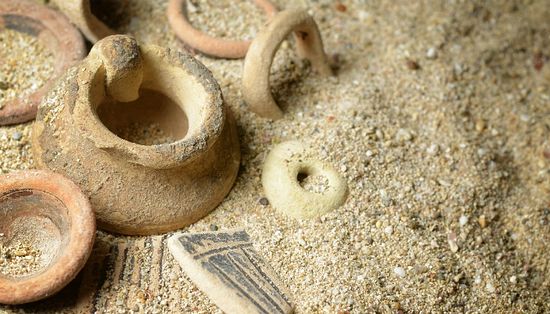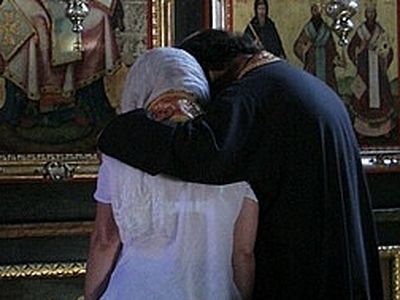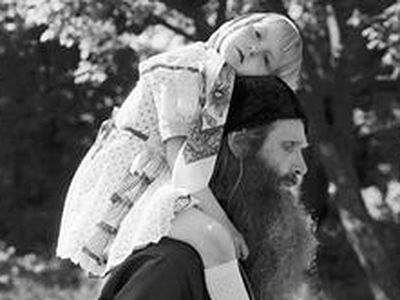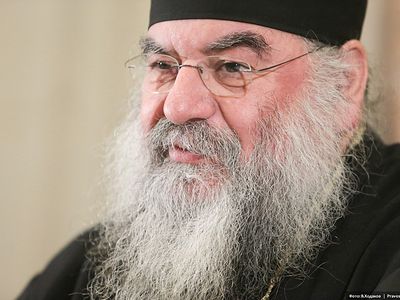Many Orthodox Christians speak of a search for the early Church; of a search for the “ancient faith.” As such, it can be all too easy to conflate Orthodoxy with that which is “old.”
But Orthodoxy is not true because it is old; it is true because it is orthodox. Even though many people confuse references to the ancient faith or the faith of the apostles with a call to the past, what we are speaking to—or rather, should be speaking to—is a faith that has its roots in the timeless, apostolic Church of Jesus Christ.
We can trace our faith back to the apostles—these spiritual giants of old—but the faith and practice of today is not identical to that of first century Palestine. As a matter of fact, it has undergone a tremendous amount of development and refinement since that time.
Theology Is Not Archaeology
A repeated call to emulate or “benchmark” the early Church is what I like to call theology as archaeology.
This erroneous approach can often be found in Protestantism, but you can even find it among recent converts to Orthodoxy or those with a misunderstanding as to what Orthodoxy is really all about. But as I said above, we do not believe something simply because it is old, but rather because it is true—because it is orthodox. And there’s a big difference between these two approaches.
Someone doing theology as archeology will look at a practice of the Church in the past and assume that this speaks to how we should be doing things in the present. But this is more traditional-ism than tradition. Artificially grafting something from a point in the past onto the Church of the present is an exercise in archaeology, as it discounts the organic, spiritual “development” of the Church in history. It can even convey that the Holy Spirit has somehow left the Church on her own for a number of centuries (a sort of Deism).
But Orthodox Christians should believe and understand that Christ is Immanuel, God with us, and that he promised to send a Helper to guide the faithful into all truth. As members of the one holy, catholic, and apostolic Church, we believe that God has not left us to ourselves, but is rather with us every step of the way.
This does not mean that everything is perfect all the time—there are still human beings involved in the Church after all—but it does mean that the Divine nature of the Church is not corrupted as a result of our various shortcomings. To think otherwise would be a form of ecclesiastical Monophysitism or even Docetism.
The Over-Simplification of the Early Church
Have you ever heard someone ask, “How did the early Church worship?” Or, “What did the early Church believe and teach about baptism?”
In these seemingly innocent questions is a substantially flawed theology—a theology that assumes the whole of Christian doctrine was perfected by the time of Christ’s ascension. But what we know from Church history is that theology progressed and struggled through history, in the face of both persecution and a multitude of heresies, to the very refined and developed place it is today.
There was no golden age of the Church. One need only consider the canonization of Imperial Saints like Constantine and Justinian the Great—Christian Emperors that helped eliminate widespread doctrinal errors in the Church and who paved the way for a long line of Christian posterity. In the significant struggles of every century since the days of the apostles, the Church made great strides in defining what it means to be an orthodox Christian.
Alongside those doctrinal struggles was artistic development, specifically in the expression of our divine services, hymns, iconography, and architecture. While the persecuted forefathers of the first and second centuries were meeting in the homes of the wealthy, the emancipated Church of Theodosius and Justinian celebrated Divine Liturgies in adorned temples unlike the world had ever known—services so glorious it led to the conversion of entire nations at the very sight of it.
So no, we don’t look to the early Church for our specific forms of worship and piety (even as the same, basic elements were there in seed form). Instead, we look to the same Church of the first and second centuries that persists in the world today.
Both Now and Forever
Being the Body of Christ, the Church is, in many respects, the same yesterday, today, and unto ages of ages. At the same time, she is a Church of history—a Church comprised of people like you and me, those who live and breathe in this present, evil age. In this paradox is the deeper truth that, for the Church of the living God, our life of worship is timeless.
When we celebrate the Great Feasts, we announce “on this day” Christ was born, crucified, or risen. We say “on this day” Mary entered into the temple or Christ was baptized in the Jordan river. Everyone knows that “this day” is—in our perceived reality—a Wednesday in the year 2015. But the Church sees beyond the material to the hidden, to a place where heaven and earth meet, and time itself is rendered meaningless, or (at the very least) is even ours for the shaping.
This simple lesson of temporal mechanics reminds the faithful that we are not merely participating in a faith that is “old.” Instead, we know that this ancient faith is such because it’s predicated by the Ancient of Days. Our Divine Liturgy is one foot placed into the eternal throne room of heaven, even as we stand upon the tiled floors of our terrestrial temples.
The Orthodox Church is related to the early Church not because we worship or pray exactly as they did, but rather because the apostolic charism resting on those fire-anointed apostles is the same that rests on our faithful bishops and priests in the twenty-first century.
The orthodoxy of our faith is not found through archaeology or a search for the past, but rather in the apostolic continuations of each and every age.
If we’re searching for the faith of the apostles, we’re searching for the one holy, catholic, and apostolic Church in the world today, not an artificial reconstruction of our own imagination.




